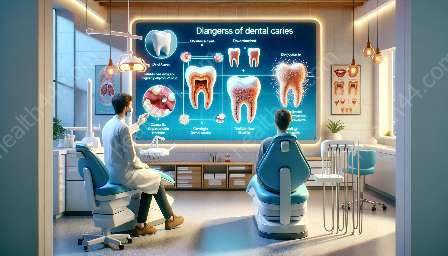Gum disease, also known as periodontal disease, is a common oral health issue that affects millions of people around the world. Despite its prevalence, there are several myths and misconceptions surrounding gum disease that can lead to confusion and misunderstanding. In this article, we will debunk these myths and provide an in-depth look at the effects of poor oral health on gum disease.
Myth 1: Gum Disease Only Affects the Gums
One of the most common misconceptions about gum disease is that it only affects the gums. In reality, gum disease can have far-reaching effects on overall health, as it is linked to various systemic conditions, such as heart disease, diabetes, and respiratory problems. The bacteria and inflammation associated with gum disease can enter the bloodstream and contribute to these serious health issues.
Myth 2: Only Older Adults Can Develop Gum Disease
While it is true that the risk of developing gum disease increases with age, it can affect individuals of all age groups. Poor oral hygiene, smoking, genetic factors, and certain medications can all contribute to the development of gum disease, even in younger individuals.
Myth 3: Bleeding Gums Are Normal
Many people believe that occasional bleeding from the gums is normal, especially while brushing or flossing. However, bleeding gums can be a sign of gum disease and should not be ignored. Inflammation and bleeding are early signs of gingivitis, the mildest form of gum disease. Proper oral hygiene and regular dental check-ups are essential for preventing and treating this condition.
Myth 4: Gum Disease Is Irreversible
Contrary to popular belief, gum disease is not always irreversible. In the early stages, gingivitis, it can be treated and even reversed with professional dental care and improved oral hygiene. However, if left untreated, gingivitis can progress to periodontitis, a more severe form of gum disease that can cause irreversible damage to the gums and underlying bone.
Myth 5: Brushing Harder Prevents Gum Disease
Some individuals mistakenly believe that brushing their teeth harder will prevent gum disease. In reality, aggressive brushing can damage the delicate gum tissue and contribute to gum recession. Proper brushing technique, along with daily flossing and regular dental cleanings, is the most effective way to prevent gum disease.
Myth 6: You Will Know If You Have Gum Disease
Another common myth is that individuals will know if they have gum disease due to noticeable symptoms. While gum disease can cause symptoms such as swollen, tender gums and persistent bad breath, it can also progress silently without any obvious signs. Regular dental visits are crucial for early detection and intervention.
Effects of Poor Oral Health on Gum Disease
Poor oral health habits and neglecting regular dental care can significantly increase the risk of developing gum disease. Plaque, a sticky film of bacteria, can build up on the teeth and gum line, leading to inflammation and infection. Without proper oral hygiene and professional cleanings, this plaque can harden into tartar, further contributing to gum disease.
Furthermore, poor oral health can weaken the immune system, making it more difficult for the body to fight off bacterial infections, including those associated with gum disease. Smoking, an unhealthy diet, and certain medical conditions can also compromise oral health and increase the likelihood of developing gum disease.
By understanding the myths and misconceptions about gum disease and the effects of poor oral health, individuals can take proactive steps to maintain optimal oral hygiene and prevent the onset of gum disease. Good oral hygiene practices, including proper brushing, flossing, and regular dental check-ups, are essential for keeping gums healthy and preventing the potentially serious consequences of gum disease.



